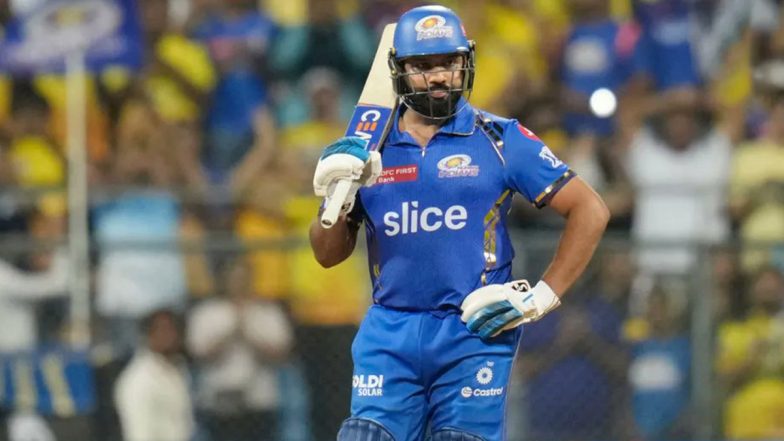If India is to become a developed nation by 2047, people will need to take initiative and become part of a mass movement whose sole goal is a ‘Viksit Bharat’. This is Prime Minister Narendra Modi’s clear message for 140 crore Indians. On Monday, the Prime Minister launched the ‘Viksit Bharat @2047: Voice of Youth’ initiative that will seek the views and suggestions of India’s youth over the next one month to make the country a developed one over the next 25 years.
PM Modi called on all citizens to make India’s development their primary mission. “Today, every person, every institution, and organisation has to move forward with the pledge that whatever I do, should be for a developed India. The focus of your goals and resolutions should be only on developed India”.
Essentially, as is his signature style, Prime Minister Modi is looking to make the ‘Viksit Bharat 2047’ mission a people’s movement. Just as India’s G20 presidency became a point of convergence for Indians from all states as events were organised across the country, the Centre now wants to make all Indians active participants in the mission to develop the country. In fact, the concept of ‘Jan Bhagidari’ or people’s participation, according to PM Modi, has been essential to several other programmes such as Digital India, Swachh Bharat Abhiyan and Vocal for Local.
The past nine years have been transformational for India in many aspects. The government’s focus since 2014 has been at making sure that Indians have all basic amenities at their disposal before the country undertakes the task of becoming a “developed nation”. Whether it be giving Indians access to their own bank accounts, electricity, pucca houses, tap water supply, toilets, LPG connections, health insurance or enabling them on the digital front – an “all of government” push has been underway to prepare Indians for what is coming next.
While all of this is also part of India’s development journey, it should have ideally been delivered to every Indian citizen over the past 70-odd years. Since that was not the case, the Modi government had to start from scratch on a lot of fronts.
PM Modi is now seeking a third term in office. His government’s canvass is getting wider, and the goals more ambitious. The question is: how does a country of India’s size become a developed nation over the next 25 years? Conventional policy interventions, laid back development trajectory is unlikely to work. India must innovate and think out of the box.
With Modi at the helm for the foreseeable future, that should not be much of a problem, since the Prime Minister now has a proven track record of thinking out of the box and delivering on his promises. That is the whole reason why the “Modi Ki Guarantee” slogan has become such a sensation – one that played a big role in BJP sweeping the Hindi Heartland states recently.
Viksit Bharat 2047 Vision Document
Over the next two decades, whatever India does will be directed towards turning the country into a developed one. However, random policies and haphazard decisions will not make India a developed nation. If India is to achieve its ultimate goal, it must have a comprehensive strategy in place. That is what the Viksit Bharat 2047 vision document will provide the government and various stakeholders with a blueprint to develop India.
India’s principal public policy think tank, NITI Aayog is currently working on the draft vision document, which will be unveiled sometime in late January by PM Modi himself. NITI Aayog CEO BVR Subrahmanyam said on Monday the body is in the final stages of harmonising reports from secretaries of various sectoral groups to prepare a blueprint for ‘Viksit Bharat @2047’.
Earlier this year, NITI Aayog was tasked with preparing the vision document that outlines the institutional and structural changes and reforms needed to achieve the goal of a Viksit Bharat by 2047.
The 10 secretarial-level groups were asked to formulate sector-wise thematic visions two years ago. This was after the Cabinet Secretary in December 2021 initiated the process of preparing a blueprint for India to become a developed nation. These sectoral groups dealt with rural affairs and agriculture, resources, social vision, welfare, finance and economy, commerce and industry, infrastructure, technology, governance, and security and foreign affairs.
The Viksit Bharat 2047 vision document is ambitious. It reportedly sets the goal of a per capita gross domestic product (GDP) of $17,590, a literacy rate of 90% and an investment volume of over Rs 1,200 trillion by 2047. The government also wants the country’s college enrolment rate to go up from 27% to at least 50 or 60% in the next two decades. India’s trade deficit, according to the draft document, should be around $3.5 trillion in 2047, with $8.67 trillion of exports and $12.12 trillion of imports.
In the run-up to the Prime Minister unveiling the Viksit Bharat vision document towards the end of January, a nationwide ‘Viksit Bharat Sankalp Yatra’ has been launched by the Centre. The Yatra is intended to ensure last-mile delivery of the Modi government’s various schemes, and educate people about how they can benefit from these.
Looking to cover 2.55 lakh Gram Panchayats and 3,600 urban local bodies by January 25, the Yatra’s goal is to achieve 100% saturation of the government’s various schemes. This will then be followed by the PM launching the vision document.
The Sankalp Yatra is serving another important purpose – that of popularising the phrase ‘Viksit Bharat’ at the panchayat level. This is essential to embedding the idea of a developed India in the minds of people and making sure that they contribute to the nation’s growth. Only when the collective power of 1.4 billion Indians is tapped into will the country achieve what is perhaps its most ambitious goal ever – that of being counted among the developed nations of the world.







